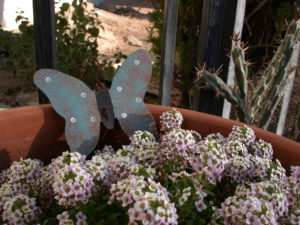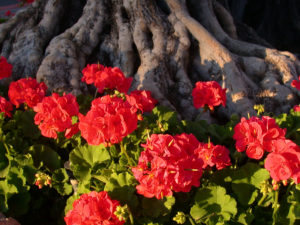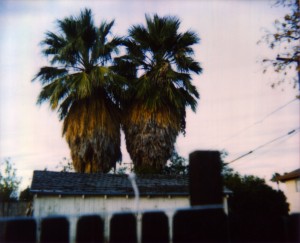Something didn’t happen this spring, and I’m still mulling it over.

People who live in Phoenix experience two and a half seasons. We have the well-known season; Summer and we have the other one, Winter. In-between are really the nicest two months of the year, March and October.
Our fall is practically one month of blessed cooling with the leaves actually turning mostly in December and January, and descends into winter or “Tourist Season.” Tourist Season begins generally after Christmas and ends after baseball spring training.
From the time in my youth when my thoughts turned from banana seat bikes to the girls that were never noticed, I also noticed spring, or at least my response to spring. It wasn’t just that the girls went from grey sweaters and knit caps to off the shoulder peasant tops and flowing locks. It was spring. When I attended college, I saw a trend develop as women came to school; either they met someone or carried a love from a far place and settled in. By spring, changes were due. New flings happened. Relationships changed. The budding blossoms always turned the relationships around, it seemed. I was both the recipient of and benefactor from both, and it truly was something in the air.
The scent of Spring, wafting languorously from fields of citrus trees and rose bushes, or the tall “stocks” at the South Mountain Flower Garden on Baseline. When spring comes to the desert, many times after a good wet winter, it’s not subtle. It’s explosive. It’s almost deafening. It never failed to stir me emotionally. Practically all my teen through post-college life was a series of spring romances amongst bursting orange blossoms. I might have been taken by the wistfulness of fall and the coziness of winter, but spring slapped me around emotionally time after time.
After marriage and settling down, I’ve spent the last 30 some years appreciating spring’s lure from a safer, less emotional space, or so it seems. Inside, my thoughts swivel like my head used to at the first sign of female exposed skin in spring clothing. I remember the rush of the newness of a relationship, the not knowing and confusion, the unsaid things mixed with passion and pleasure. Spring was always in the background yet pulling the strings. It’s something I could at least savor from far off memories, every time that first blossom blast hit the air.
Until this year, I figured spring allergies were something others coming from places like Wisconsin and Michigan would experience as they dragged their Midwest maladies with them. Sure, I knew the days of “Take Your Sinuses To Arizona” ads were long gone; a product of the same Midwesterners who craved familiar plants and grasses. Needless to say, Bermuda grass is not indigenous, though I question whether the island is covered with the stuff.
I figured as long as I had the lung scars of exposure to Valley Fever that any desert dweller gets after a lifetime here, I was immune to spring allergies. In 2017 I found I was dead wrong.
It began in late winter with a nagging tickle in my throat, then nose running and sneezing. By March I had to see a doctor, as I was worried it was something worse than a seasonal thing. My throat was cobbled and raw, my nose red from frequent blowing. The doctor threw the works at me, even an ultrasound on my throat to look for anything worse. I started for the first time an allergy pill regime, which barely cut it by the end of the day. I’ve gone through lots of painful things, from concussions to knee replacement, but I don’t think I’ve been so afraid of not knowing when or if this awfulness would end.
In hindsight, it may have been my own dread of unexplained sickness that made me forget that spring was the time for renewal, awakening and romantic thoughts. Who feels nostalgic when you wonder if surgery is imminent?
By mid-April t he season and blooming started to wane. Our intense heat typically makes short work of the pretty flowers and just a week ago I stopped the allergy pills, much after the throat soreness had left me. It was a spring on steroids and it took me with it on a new journey, totally unlike my dreamy memories. When you get older and doctors are mystified what is wrong with you, it’s way more ominous than when you are in your bulletproof youth. I felt I honestly looked at what it would be like without another spring.
he season and blooming started to wane. Our intense heat typically makes short work of the pretty flowers and just a week ago I stopped the allergy pills, much after the throat soreness had left me. It was a spring on steroids and it took me with it on a new journey, totally unlike my dreamy memories. When you get older and doctors are mystified what is wrong with you, it’s way more ominous than when you are in your bulletproof youth. I felt I honestly looked at what it would be like without another spring.
Now summer’s coming quick. It doesn’t take Memorial Day for our unofficial summer to begin. Mother’s Day is a stretch to eat brunch outdoors, but we suspend reality and Mom gets cold easy anyway.
I dread summer every year, and probably will again this year, but not the same way. It took summer’s fury to kill spring’s allure, and as much I’m the romantic I always hope to remain, I’m relieved by its passing.
